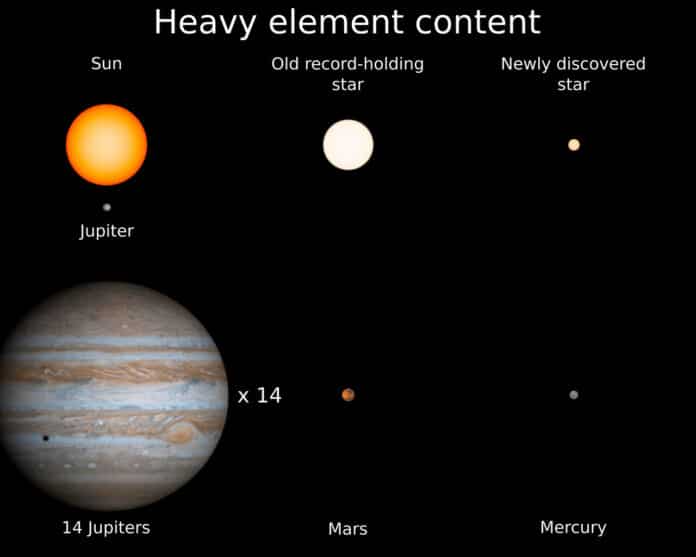Astronomers at the Johns Hopkins University have discovered what could be one of the universe’s oldest stars, a body on the whole made of materials heaved from the Big Bang.
According to astronomers, the star is almost a 13.5 billion-year-old tiny star. It is unusual because, unlike other stars with very low metal content, it is part of the Milky Way’s “thin disk” — the part of the galaxy where the sun resides.
The discovery implies more stars with low mass and low metal content are likely out there — maybe even the universe’s first stars. Also, on the grounds that this star is so old, specialists say it’s conceivable that our galactic neighborhood is something like 3 billion years more established than beforehand thought.
Kevin Schlaufman, a Johns Hopkins University assistant professor in the Physics and Astronomy Department, said, “This star is maybe one in 10 million. It tells us something very important about the first generations of stars.”
The universe’s first stars after the Big Bang would have comprised altogether of components like hydrogen, helium, and little measures of lithium. Those stars delivered components heavier than helium in their centers and seeded the universe with them when they detonated as supernovae.
This star’s greatly low metallicity demonstrates that in an enormous family tree, it could be as little as one age expelled from the Big Bang. In reality, it is the new record holder for the star with the smallest complement of substantial components – it has about the same heavy component content as the planet Mercury. In contrast, our sun is thousands of generations down that line and has a heavy element content equal to 14 Jupiter.
Astronomers have found around 30 ancient, “ultra metal-poor” stars with the approximate mass of the sun. The star Schlaufman and his team found is only 14 percent the mass of the Sun.
Scientists determined that the star is part of a two-star system orbiting around a common point. Moreover, there is a tiny, almost invisibly faint “secondary” star discovered by another group of astronomers. Scientists measured its composition by studying a high-resolution optical spectrum of its light.
The nearness or absence of faint lines in a star’s range can recognize the components it contains, for example, carbon, oxygen, hydrogen, and iron, and that’s just the beginning. In this situation, the star had greatly low metallicity.
Those astronomers additionally distinguished unusual behavior in the star framework that suggested the presence of a neutron star or black hole. Scientists observed that to be inaccurate, yet in doing so they found the visible star’s considerably smaller companion.
However, the discovery of this smaller companion star turned out to be a big discovery. Astronomers were able to infer its mass by studying the primary star’s slight “wobble” as the little star’s gravity tugged at it.
The discovery of this new ultra metal-poor star, named 2MASS J18082002–5104378 B, opens up the possibility of observing even older stars.
Schlaufman said, “If our inference is correct, then low-mass stars that have a composition exclusively the outcome of the Big Bang can exist. Even though we have not yet found an object like that in our galaxy, it can exist.”
Journal Reference
- Kevin C. Schlaufman, Ian B. Thompson and Andrew Casey et al. An Ultra Metal-poor Star Near the Hydrogen-burning Limit*. The Astrophysical Journal. DOI:10.3847/1538-4357/aadd97
